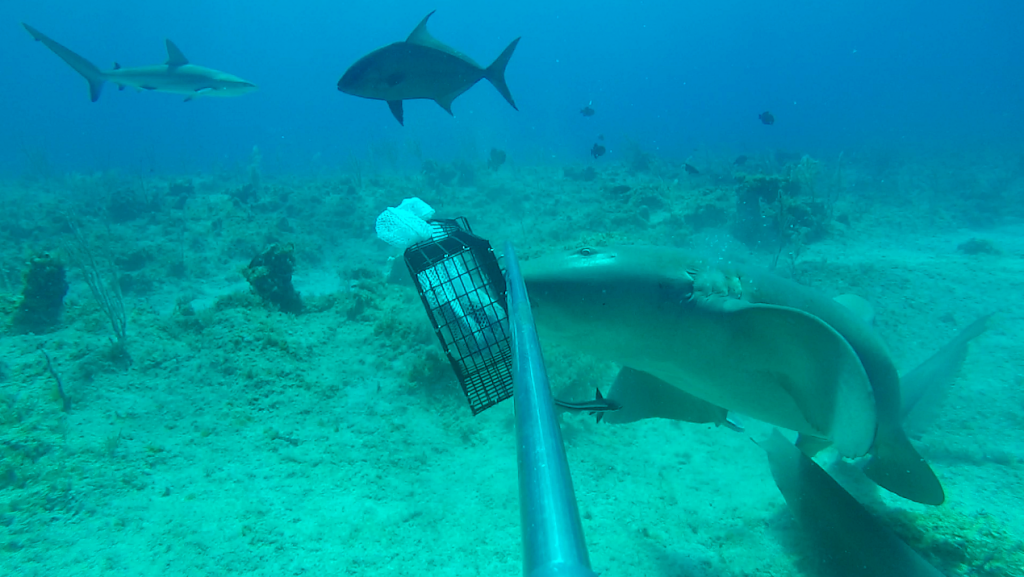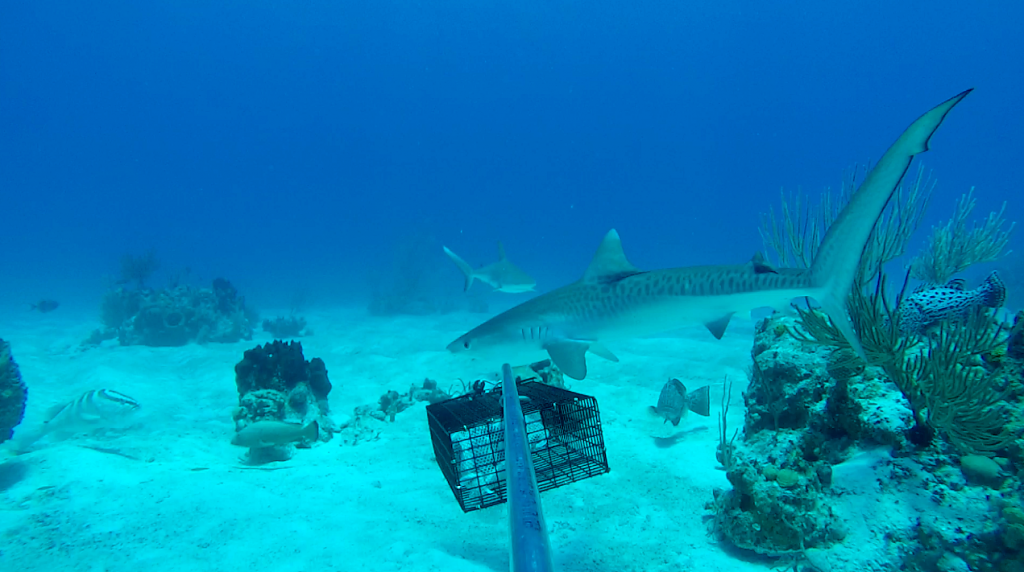On May 6th, Associate Research scientist Dr. Owen O’Shea and Shark Research and Conservation Program (SRCP) intern Nicole Firing from The Cape Eleuthera Institute (CEI) headed to San Salvador Island and Conception Island to start continue the Global Fin Print project in collaboration with The School of Marine and Atmospheric Science (SoMAS) at Stony Brook University, New York. Global Fin Print is an initiative that brings together elasmobranch researchers to help understand and fill knowledge gaps in the relative abundance of shark populations globally. Collaborators and researchers from multiple institutions world-wide have joined forces to better understand the influence of elasmobranchs on reef systems. Global Fin Print’s goal is to implement conservation efforts in areas where shark populations seem to be diminishing and provide an open-access database to the public for scientific and educational purposes. CEI partnered with SoMAS in to sample different parts of The Bahamas including Andros, Nassau, Conception Island, San Salvador Island and the Exuma Cays.

San Salvador saw a total of 50 baited remote underwater video (BRUV) deployments across a spatial scale of almost 20 miles along the shelf reefs of the western side of the island. Each deployment ‘soaked’ for 90 minutes resulting in in 75 hours of footage. With over 50 world class dive sites located off the coast of San Salvador, this sampling area has been drawing divers in for many decades because of the steady population of reef sharks. Common species recorded were the Caribbean reef shark, nurse shark, Nassau grouper, red hind grouper, mutton snapper, bar jack and yellow tailed snapper.
The second sampling location was the stunning and uninhabited Conception Island – 42 miles south west of San Salvador. Conception Island is a plateaued island in the Southern Bahamas with an extensive mangrove creek system taking up a large majority of the island and a large lagoon on the windward side of the island. This land and sea park has been a no take marine reserve for 5 years, is an important nursery for juvenile green turtles and nesting grounds for a range of birds including the magnificent tropicbird. This island also has the longest continuous ‘Montastrea’ coral reef in The Bahamas. The team deployed 40 units totoalling 60 hours of footage and common visitors the cameras were Caribbean reef sharks, juvenile tiger sharks (Galeocerdo cuvier) and nurse sharks.

The trip was hailed a success and will contribute to the growing knowledge base on our oceans top level predators. CEI would like to thank SoMAS and Stony Brook University for their continued partnership in ongoing research to understand the knowledge gaps of apex predators in The Bahamas.